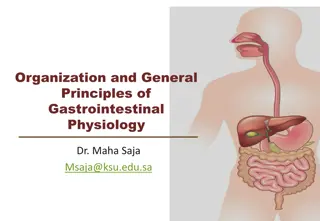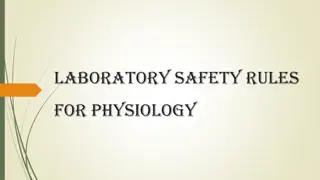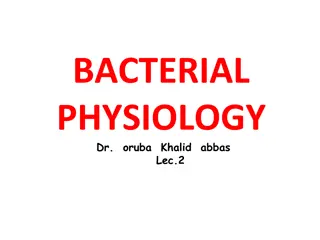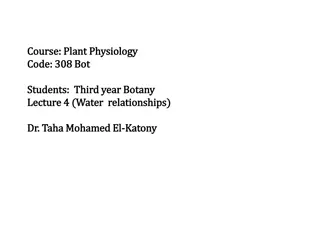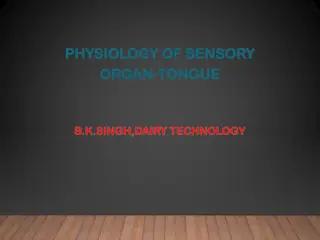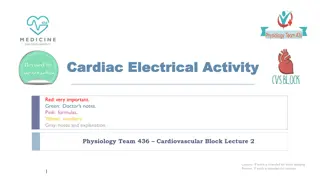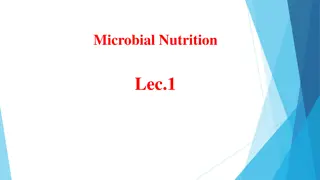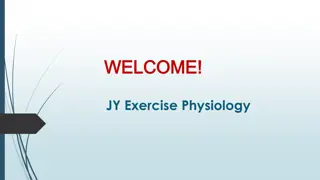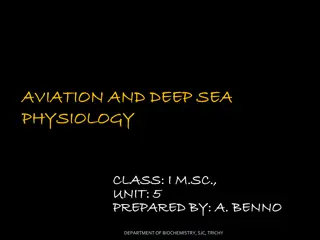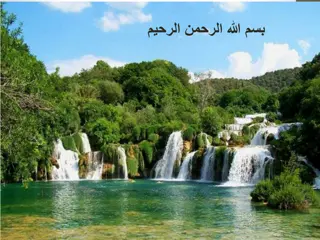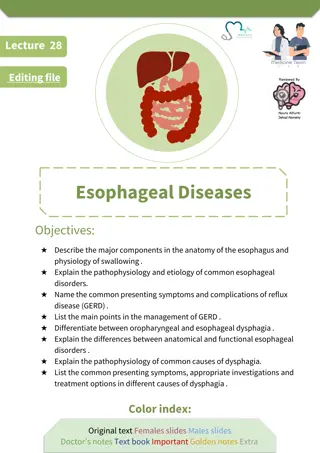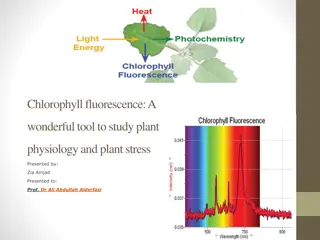Physiology of Micturition
The process of micturition (urination), the functional anatomy of the urinary bladder, neural control, the mechanism of filling and emptying of the bladder, and the neurogenic control of the micturition reflex and its disorders.
Download Presentation

Please find below an Image/Link to download the presentation.
The content on the website is provided AS IS for your information and personal use only. It may not be sold, licensed, or shared on other websites without obtaining consent from the author.If you encounter any issues during the download, it is possible that the publisher has removed the file from their server.
You are allowed to download the files provided on this website for personal or commercial use, subject to the condition that they are used lawfully. All files are the property of their respective owners.
The content on the website is provided AS IS for your information and personal use only. It may not be sold, licensed, or shared on other websites without obtaining consent from the author.
E N D
Presentation Transcript
L7 Physiology of Micturition Physiology renal Editing File - Color Index: Main Text Male s Slides Female s Slides Important Doctor s Notes Extra Info
Objectives Define micturition Identify and describe the functional anatomy of the urinary bladder Describe the neural control of the urinary bladder and sphincters Describe the mechanism of filling and emptying of the urinary bladder Understand Cystometrogram Explain the neurogenic control of the micturition reflex and its disorders
1 Introduction Micturition (urination): the process by which the urinary bladder empties when it becomes full. Filling of bladder Micturition reflex Voluntary control. GFR = 125 ml/min Tubular reabsorption = 124 ml/min Rate of urine formation = 1 ml/min Ureters conduct urine to bladder, How? By contraction and relaxation of the ureter, this movement is called ureteral peristalsis Urine is stored in the bladder until voiding. Recap: Blood with waste enters the kidney through the renal artery, then branches until reaching the afferent arterioles of the glomeruli, where only the plasma is filtered along with all the substances under 70,000 D. The useful substances (glucose, amino acids) get reabsorbed while the rest are excreted from the collecting duct all the way to the renal pelvis (no further modification to the urine happens) then onto the ureters then finally the bladder.
2 Physiologic Anatomy and Nervous Connections of the Bladder thanks439 Composed of: 1. Body 2. Neck ..post urethra (stretch receptor) External sphincter. Pelvic diaphragm. A reservoir adult >250-400ml Detrusor muscle >pr can rise upto 40-60 mmHg. Mucosa, RUGAE, TRIGONE. Urinary bladder: - Muscle chamber composed of two main parts: body and neck. -When the bladder relaxed we see ridges in the wall called Rugae which acts like a balloon so it can accommodate a great increase in volume without significant increase in pressure due to its ability to unfold. (Only seen when bladder is relaxed) Trigone: - A smooth triangular area in the internal urinary bladder bounded by 2 ureteric orifices and an internal urethral orifice. Its mucous membrane is elastic (not folded). Filling of bladder and it s tone: 0 when empty. 30-50 ml 5-10 cm of water. 200 300 ml small additional rise of pr. Beyond 300 400 ml pr rises rapidly. Micturition waves acute pr peaks superimposed on the tonic pr changes can range from few to > 100 cm of water caused by micturition reflex. Cystometrogram. How many sphincters are there and how are they important? Very important Two sphincters: - Internal sphincter is made up of smooth muscle (involuntary by autonomic nerves). - External sphincter is made up of skeletal muscle (voluntary by somatic nerves). Formed by thickening circular muscles in the base of the bladder - Made of skeletal cells of perineum. -The base that the bladder is set on. -As the urethra passes through urogenital diaphragm, some of the skeletal muscles rotate around it and make the External urethral sphincter As the urethra passes down to open in the external environment it crosses the Urogenital diaphragm.
3 2: Smooth muscles called ureters transport the urine from the kidney to the bladder by peristalsis (alternating contraction and relaxation) 3: Urine stored in the bladder until voiding 1: Urine is formed in the kidney Functions of lower UT Voiding (micturition) The lower urinary tract = bladder + urethra Urine storage Bladder wall contracted Sphincters open (relaxed) Result: Empty when appropriate This is why we have partial voluntary control over it Bladder wall relaxed (To allow for increase of volume without increase of pressure) Sphincters closed (contracted) Result: storage without leakage Urine transport from kidney to bladder Urine is transported through the ureters. Urine is propelled through the ureter and into the bladder by the help of peristalsis. Peristalsis is thought to be initiated by pacemaker cells in the renal pelvis. Sympathetic stimulation inhibits peristalsis. Parasympathetic stimulation enhance peristalsis. Remember that the sympathetic system is activated in high-stress situations, you wouldn t want to urinate in those situations
4 Mucosa Transitional epithelium. -change in intravesical pressure. -this result in high compliance of the bladder. The bladder wall has four layers Submucosa Loose connective tissue. Smooth muscle layer Detrusor muscle: - Detrusor muscle is responsible for contraction and relaxation of bladder. Serosa Uretovesicular junction The ureter penetrates the bladder through the ureteric orifice. When the bladder gets full, the opened junction will close due to the increase in the intravesical pressure (pressure inside the bladder) to prevent the urine from entering and traveling back to the kidney The ureter passes obliquely through the wall of the urinary bladder to make both an anatomical and physiological valve. What is the benefit of the valve? If the course of the ureter was straight, urine would go back into the ureter then the kidney when the bladder fills up. The kidney will get larger because of the accumulation of urine (Hydronephrosis) as well as raising the chances of infections. This results in damage of the kidney and possible renal failure. So to protect the ureter from backflux or Reflux of urine, the course of ureter becomes oblique through the muscle wall so when bladder gets filled > the pressure of urine will push the wall then it gets blocked > so there is NO reflux. Congenital anomaly in children: The ureterovesical junction courses straight instead of obliquely. So when the child comes to you with Recurrent upper urinary tract infection (e.g: pyelonephritis), question if there is a congenital anomaly causing reflux of urine which cause infections and hydronephrosis.
5 Nervous innervation of the Lower urinary tract Question from the doctor: If you give someone alpha blockers, what happens? A: It blocks the contraction of sphincters so urine passes easily Nerve supply of LUT Somatic Autonomic Sympathetic Parasympathetic -Roots, T11-L2 -It's autonomic so it's involuntary > It will innervate smooth muscles (the body of the bladder) + internal urethral sphincter via - Hypogastric nerves - Function:Relaxes bladder through Adrenergic receptors 2, 3 -Contracts internal sphincter through adrenergic receptor 1 -Roots: S2-S4 -Voluntary, so it will innervate skeletal muscles (contract External urethral sphincter.) via -Pudendal Nerves - Neurotransmitter: ACh -Function:Contraction of External Sphincter. -Roots: S2-S4 -It's autonomic so it's involuntary, It will innervate smooth muscles -Pelvic nerves. -Function: contracts the wall of the bladder (detrusor muscle) -through muscarinic receptors M2, M3 -Relaxes internal sphincter through nitric oxide Pelvic, Hypogastric, and Pudendal nerves contain afferent axons that transmit information from the lower urinary tract to the lumbosacral spinal cord
6 Question from the doctor: which nerve carries sensation of a full bladder? A: Hypogastric Follow up: Why not pudendal? Because smooth muscle is not supplied by somatic nerves The Micturition Reflex Micturition is a visceral function under control of autonomic system (Normally involuntary, but it s a reflex that undergoes voluntary control from higher center) How is micturition different from other visceral functions? The special thing about Micturition is that although it is mediated by the autonomic nervous system (which makes it involuntary) it s controlled by the higher brain center CNS (voluntary control) which is why we can control ourselves. Unlike other visceral organs e.g. intestinal movement I cannot control my stomach when it digests food or when it doesn t this is not under my control (Team439)
7 1 Filling of bladder 2 Stretches the wall 3 Stimulate stretch receptors 4 Signals are carried through pelvic nerve to sacral center 5 Excite parasympathetic efferent (contract the wall and relax the internal sphincter) and inhibit pudendal discharge (to relax the external sphincter as well) Result - - The bladder contracts Internal and External sphincters are both open Urine is expelled out of body Micturition has occurred - - The Micturition reflex is an autonomic reflex that can be facilitated or inhibited by higher centers (pons and cortex; medial side of pons facilitates micturition/voiding; lateral side of pons facilitates storage) Lateral pontine center: contracts bladder outlet (sphincter) & inhibits detrusor (bladder wall) Medial pontine center: contracts detrusor (bladder wall) & inhibits bladder outlet (sphincter) It occurs in two steps: 2- At the threshold, a nervous reflex is initiated micturition reflex to empty the bladder 1- Progressive filling of the bladder until a threshold is reached If the conditions for emptying are favorable, emptying will occur If the conditions for emptying are unfavorable, reflex is inhibited, however, there is the conscious desire to urinate
8 The Micturition Reflex The Micturition Reflex - Infants The Micturition Reflex - adult 1. 2. An autonomic spinal reflex. Involuntary, not yet under higher CNS control because the nerve tracts aren t yet myelinated in infants. Between 2-3 years age, they learn to control it and becomes voluntary. 1. 2. 3. An autonomic spinal reflex Voluntary. Controlled by higher CNS center: brain stem (pons) and cerebral cortex Control is either inhibitory which (increase tone of external sphincter) or facilitatory 3. 4. The Cystometrogram Filling of bladder-bladder tone Bladder tone (bladder function) = the relationship between bladder volume and pressure (intravesical pressure; vesical means bladder) The relationship between bladder volume and intravesical pressure can be studied using cystometry The volume-pressure record is called a cystometrogram They use it specifically when they want to know what s the problem of bladder function to assess it. Still done clinically Bladder Filling = Reflect bladder tone
9 Cystometrogram We describe this diagram by three phases: Ia phase Ib phase ll phase an increase in IVP from 0 to 10 cm H O, at an initial increase in volume from zero to 50 ml; initial slight in pressure when the first increments of volume are produced filling of bladder from 50 to 400 ml urine causes no significant increase in IVP. Why? Because of high compliance (stretch); long, nearly flat segment as further increments are produced volumes greater than 400 ml will cause a steep increase in IVP triggering the micturition reflex; sudden sharp in pressure as the micturition reflex is triggered Steep pressure because reached max stretch so any volume will pressure Sudden in pressure (5-10 cm H O) Little change in pressure because there is stretch (until 400 ml)
10 Team 439! Superimposed on the basal cystometrogram are periodic sharp increases in IVP that may last a few seconds to more than a minute These peaks are called Micturition waves (voiding waves), and they are caused by Micturition reflex Micturition waves: acute pr peaks superimposed on the tonic pr changes can range from few to >100 cm of water caused by micturition reflex Bladder sensations at different urine volumes 400- 600ml 600- 700ml At 700 ml 150- 300ml 300- 400ml First urge (strong desire) to void Breakpoint (very painful) Micturition cannot be suppressed Sense of discomfort Sense of bladder fullness Sense of pain Micturition reflexes start to appear at the first stage and progressively increase in intensity as the volume increases. Micturition reflexes can be voluntarily suppressed The picture on the left describes the circulation of urination process from empty bladder to the micturition reflex.
11 Abnormalities in Micturition As a general role of injury in Nervous System: Generally speaking: Lesions above the sacral center Lesions below the sacral center UMN (upper motor neuron) lesions Overactive bladder which leads to: LMN (lower motor neuron) lesions Flaccid bladder which leads to: 1. tone of bladder wall 2.Hypertrophy of bladder wall. 3.Reduced capacity 4.Involuntary contractions of detrusor 5.High IVP 1. tone of bladder wall 2.Thin (mild hypertrophy) of bladder wall 3.Large capacity 4.Lack of voluntary contractions of detrusor. 5.Low IVP Cortical Spinal cord LMN -Post-central lesions cause loss of sense of bladder fullness -Bilateral UMN lesions (pyramidal tracts) cause urinary frequency and incontinence. The bladder is small and hypertonic, i.e. sensitive to small changes in intravesical pressure. Frontal lesions can also cause a hypertonic bladder -Sacral lesions (conus medullaris, sacral root, & pelvic nerve bilateral) cause a flaccid, atonic bladder that overflows (cauda equina), often unexpectedly) -Pre-central lesions cause difficulty initiating micturition -Frontal lesions cause socially inappropriate micturition
12 Abnormalities in Micturition 1- Lesions above the sacral center Causes Due to loss of inhibitory impulses coming from higher centers overactive hypertonic bladder that is sensitive to small changes in volume Features Most lesions above the level of the cord where sacral micturition takes place will cause an overactive bladder Injury can be in the cerebral cortex, cerebellum, brain stem, spinal cord (above S2 level) Common lesions include, dementia, cerebrovascular accidents, MS and Parkinson s. 2- Spinal cord transection Damage Site Spinal cord injuries (Paraplegia) Paraplegia: the inability to voluntarily move the lower parts of the body Features During spinal shock, the bladder is flaccid & unresponsive. It becomes overfilled, and urine dribbles through the sphincters (overflow incontinence) After spinal shock has passed, the voiding reflex returns, with no voluntary control & no inhibition or facilitation from higher centers. Sometimes voiding reflex becomes hyperactive called Spastic neurogenic bladder
13 Abnormalities in Micturition 3- Lesions affecting the afferent sensory nerves (Deafferentation) Tabes dorsalis (syphilis), long-standing diabetes, pernicious anemia, diseases of the dorsal roots Causes Damage Site sacral dorsal roots (Afferents) Injury of afferent nerves loss of perception of bladder fullness + micturition reflex cannot be initiated bladder overstretching thinning of the wall and ineffective contractions. Mechanism Feature -Retention of urine with overflow. -atonic or hypotonic (flaccid) bladder. Results in Lesion in the afferent sensory fibers that carry stretch sensation from bladder wall. Feeling of bladder fullness is lost. Cannot initiate the reflex The bladder cannot empty urine but urine continues to collect Urine will collect until pressure in bladder becomes high causing dribbling of urine Overflow incontinence Because the bladder has been filled to the maximum until the pressure inside it becomes higher than the pressure of the closing outlet
14 Abnormalities in Micturition 4- Denervation of the Afferent & Efferent Supply (Nerve Supply of Bladder) -e.g. AHC disease (poliomyelitis), iatrogenic factors such as surgery or radiation, herniated disc and tumours in the cauda equina -Destroyed afferent and efferent nerves -Tumors of filum terminale Causes Damage Site afferent and efferent nerves -Injury to pelvic nerves affecting both afferent & efferent nerves loss of nerve signals to bladder bladder loses tone and become flaccid and distended. -In chronic state of this decentralized bladder small uncoordinated contractions start appearing and the bladder wall hypertrophies&The bladder becomes shrunken Mechanism Feature -atonic or hypotonic (flaccid) bladder. Results in The reason for the difference between the small, hypertrophic bladder seen in this condition and the distended, hypotonic bladder seen when only the afferent nerves are interrupted is not known. The hyperactive state in the former condition suggests the development of denervation hypersensitization Meaning: In the beginning, the bladder is flaccid and distended decentralized bladder. Later on, the bladder starts having uncoordinated contractions hypertrophied bladder wall and shrunken bladder
15 Abnormalities in Micturition 5- Damage to spinal cord above the sacral region -The micturition reflex is intact, but lost higher center control As we said in the previous slide most of signals that come from brain are facilitatory more than inhibitory so if the spinal cord gets damage in any area and for any reason there will be loss of facilitatory impulses (there is nothing tell this Reflex to take place) at the beginning the reflex gets shocked (after a while the reflex it will gain a momentum the reflex becomes automatic and a big active because the inhibitory impulses are lost. -Divide into several phases: Causes 1- Acute phase - spinal shock 2- Recovery from spinal shock Loss of facilitatory impulses from CNS. Micturition reflex is inhibited Bladder fills but cannot void (overflow incontinence) Bladder needs to be emptied periodically by catheterization (to prevent accumulation of urine in bladder) Micturition reflex recovers Not controlled by CNS Bladder fills and voids automatically (Automatic bladder) (their bladder becomes like infant bladder, acts automatically when it fills, it will empty) Continuation of 5th lesion Lesion in the spinal cord above the sacral center Spindle shock phase Loss of facilitatory impulses from higher centers Micturition reflex is inhibited Micturition reflex regains function but not under CNS control Urine will collect until pressure in bladder becomes high causing dribbling of urine Recovery Overflow incontinence
Summary Functions of lower UT Voiding (micturition) Urine storage Types of sphincters Internal urethral sphincter External urethral sphincter Made of smooth muscle (involuntary) Supplied by autonomic nerve Made of skeletal muscle (voluntary) Supplied by somatic nerves Mucosa After the filling of the bladder, the uretovesicular junction closes due to increased IVP, inhibiting urine from back flowing into the kidney Layers of bladder wall Submucosa Smooth muscle Serosa *Read through the innervation slides completely and thoroughly, they are extremely important, especially the information in red
Summary Define Micturition? The process by which the urinary bladder empties when it becomes full. Describe the mechanism of filling and emptying of the urinary bladder? Bladder filled > stretch of sensory stretch receptors > stimulation of sacral segments appreciated by higher centers > inhibition of pudendal nerves > relaxation of external urethral sphincter and the contraction of anterior abdominal muscle & the diaphragm to increase the intra abdominal pressure > the intra-vesical pressure is increased and this intensifies the micturition reflex. Identify and describe the functional anatomy of the urinary bladder ? Bladder has a body and a neck, with two sphincters, internal and external. Internal sphincter is made up of smooth muscle. External sphincter is made up of skeletal muscle. The bladder is made up of 4 layers: 1. Mucosa: transitional epithelium, has folds rugae that will flatten out as the bladder fills in. 2. Submucosa: loose connective tissue. 3. Smooth muscle layer : Detrusor muscle, main muscle of micturition. 4. Serosa. Describe the neural control of the urinary bladder and sphincters? 1. Autonomic nerves: a. Sympathetic (hypogastric nerve)(L1-L3) i. Afferent: sensation of pain from the urethra and bladder. ii. Efferent: inhibitory to the detrusor muscle, motor to the internal urethral sphincter ,seminal vesicle and ejaculatory duct. b. Parasympathetic (Pelvic nerve)(S2-S4) i. Afferent: sensation of bladder fullness, reflex micturition and pain. ii. Efferent:motor to detrusor muscle and inhibitory to the internal urethral sphincter. 2. Somatic nerves: a. Pudendal nerve (S2-S4) i. Afferent: sensation of urethra distention and passage of urine through the urethra. ii. Efferent: motor to the external urethral sphincter.
Quiz Q1 Why is the uretovesicular junction oblique? A. To make urine transport faster B. To ensure the maximum amount of urine is transported C. To aid in stopping urine backflow into the kidney D. To accommodate for its long length How does the ureter transport urine? Q2 A. Peristalsis B. Voluntary control C. Exclusively contraction D. Only gravity Q3 What action does the somatic nervous system perform? A. B. C. D. Contraction of external sphincter Relaxation of internal sphincter Contraction of internal sphincter Relaxation of external sphincter Q4 What is the end result of the micturition reflex? A. Excite parasympathetic efferent & excite pudendal discharge B. Excite parasympathetic afferent & inhibit pudendal discharge C. Excite sympathetic efferent & inhibit pudendal discharge D. Excite parasympathetic efferent & inhibit pudendal discharge
Quiz Q5 What is the volume of urine at which micturition cannot be suppressed? A. 400 ml B. 700 ml C. 150 ml D. 300 ml Q6 In the cystometrogram, which phase has a plateau? A. Ib B. Ia C. II D. IIb Answers: 1-C , 2-A, 3-D, 4-D, 5-B, 6- Mention the action, nerve tract, root, and receptors for t the parasympathetic pathway Action: Contraction of bladder wall, relaxation of internal sphincter Nerve tract: pelvic nerve Root: S2-S4 Receptors: M2, M3 SAQs SAQs What occurs in lesions above and below sacral regions? Slide 19
SAQs What are the types of lesions that lead to overflow incontinence? Lesions affecting the afferent sensory nerves and damage to spinal cord above sacral region (acute phase) SAQs List and describe the phases in a cystometrogram. Ia phase: an increase in IVP from 0 to 10 cm H O, at an initial increase in volume from zero to 50 ml Ib phase: filling of bladder from 50 to 400 ml urine causes no significant increase in IVP. Why? Because of high compliance (stretch) II phase: volumes greater than 400 ml will cause a steep increase in IVP triggering the micturition reflex SAQs List and describe the bladder sensations at different volumes. Slide 18 SAQs What occurs in the acute phase of spinal shock? Occurs due to the separation of the spinal centers from the brain Loss of facilitatory impulses from CNS Micturition reflex is inhibited Bladder fills but cannot void (Retention with overflow incontinence) Bladder needs to be emptied periodically by catheterization (to prevent accumulation of urine in bladder)
Members Team Leaders Razan Almohanna Raneem Alwatban Khalid Alrasheed Othman Alabdullah Team Members Rakan Alromayan Reema Alhussien Special thanks to Naif Alquwayi Theme was done by Shatha Almutib physio442@gmail.com





